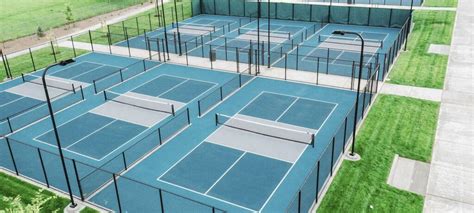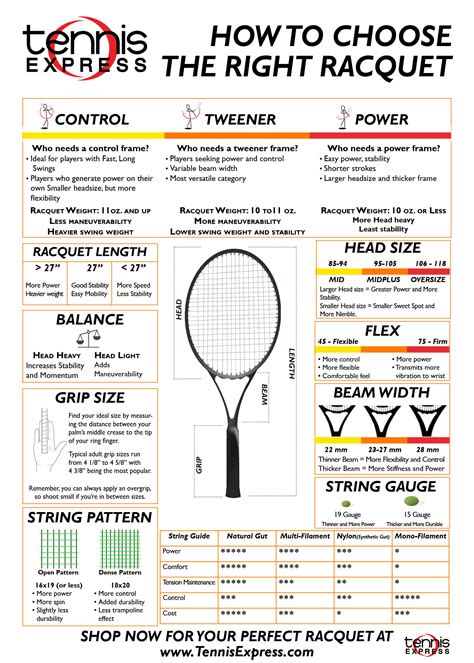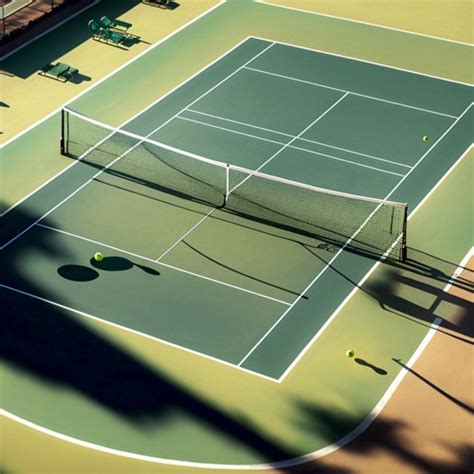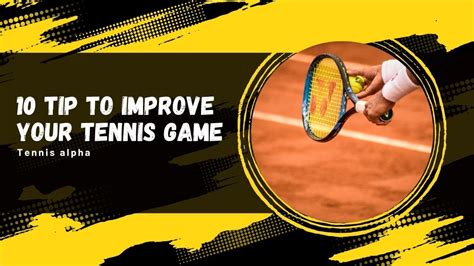Explore emerging trends, innovative designs, and sustainable materials in tennis court construction that enhance player performance and the future of the sport.In the ever-evolving world of sports, tennis remains a beloved pastime and competitive arena, constantly seeking innovations that enhance performance and player experience. This article delves into the latest advancements in tennis court materials and design, showcasing how emerging trends are reshaping the game. From cutting-edge surface technologies that maximize playability to sustainable practices that honor the environment, we explore the multifaceted impact of these innovations on players and enthusiasts alike. Discover how the future of tennis courts is being redefined, ensuring optimal performance and enjoyment for athletes at all levels. Join us as we unravel the exciting developments that promise to elevate the sport to new heights.
Emerging Trends In Tennis Court Materials
As the sport of tennis evolves, so too do the innovations in materials and design that create courts conducive to increased performance and sustainability. Various trends are shaping the future of tennis courts, enhancing not only the aesthetic appeal but also the function and environmental impact of these playing surfaces.
One of the most notable trends is the shift towards using recycled and eco-friendly materials. Manufacturers are increasingly incorporating sustainable resources like recycled rubber, plastics, and composite materials into their designs. These materials not only help reduce waste but also provide players with high-quality surfaces that improve gameplay.
Additionally, advancements in smart technology are making their way onto tennis courts. Sensors embedded in surfaces can gather data regarding player movements and performance during matches. This real-time feedback is invaluable for both athletes and trainers, allowing for tailored training regimens that focus on individual strengths and weaknesses.
Another emerging trend involves the customization of court surfaces to enhance player comfort and reduce injury risk. Innovations in shock-absorbing technologies lead to surfaces that are kinder to joints while maintaining excellent traction, thus promoting longevity in players’ careers.
Color and texture variations are gaining traction, with options that improve visibility for players. This reflects a growing emphasis on aesthetic value, making courts not just functional but also visually appealing.
Overall, these emerging trends in tennis court materials underscore the importance of integrating functionality, sustainability, and technological advancements into the design of sporting arenas, propelling the game into a new era.
Impact Of Innovative Designs On Player Performance
The evolution of tennis court materials and design plays a crucial role in shaping the player experience and performance. Recent innovations in court construction and surface technology have led to significant changes that cater to players’ needs, enhance their skills, and reduce the risk of injuries.
For instance, new materials provide optimal traction, allowing players to move swiftly and confidently across the court. These materials also offer improved shock absorption, which helps in reducing the impact on players’ joints during intense matches. The advancements in surface technology aim to mimic the playability of different court types, offering players an adjusted response based on their style of play.
Key Aspects of Innovative Court Designs
| Design Feature | Performance Impact |
|---|---|
| Surface Texture | Enhances grip and control |
| Shock Absorption | Reduces strain on legs and joints |
| Consistency of Bounce | Provides predictable ball behavior |
| Weather Resistance | Maintains quality play under varying conditions |
Moreover, the incorporation of smart technology into court designs allows for real-time data analysis, enabling players and coaches to adjust strategies and hone specific skills effectively. These innovations in player-coach interactions harness data from performance metrics, contributing to more personalized training regimens.
With ongoing advancements in tennis court materials and design, athletes are better equipped to reach their full potential, significantly impacting their overall game performance and career longevity.
Sustainability In Tennis Court Innovations
The push for sustainability is transforming various industries, and the world of tennis is no exception. As climate change becomes an increasingly pressing issue, the tennis community is exploring eco-friendly materials and designs in the construction and maintenance of tennis courts. These innovations in sustainability not only benefit the environment but also enhance the overall playing experience.
Several key aspects highlight the advances in sustainable tennis court design:
| Aspect | Description |
|---|---|
| Recycled Materials | Many manufacturers are now using recycled materials in court surfaces, such as rubber from old tires or plastics from reclaimed sources. This reduces waste and lowers the carbon footprint of court construction. |
| Water Conservation | Innovative irrigation systems are being developed that minimize water usage while maintaining court quality. These systems utilize rainwater harvesting and efficient drainage to keep courts in top condition without excessive water waste. |
| Low-VOC Products | Courts are increasingly being treated with low volatile organic compounds (VOCs) paints and sealants, which significantly reduce harmful emissions during application, leading to a healthier environment for players. |
| Durability and Longevity | Innovations in material technology have produced surfaces that are not only high-performing but also durable, minimizing the need for frequent repairs or replacements. This contributes to sustainability by lowering resource consumption over time. |
These advancements reflect a broader commitment to sustainable practices within sports. By prioritizing eco-friendly initiatives in the creation and maintenance of tennis courts, the industry is paving the way for greener sports facilities that respect the environment while enhancing player enjoyment and performance. The shift towards sustainability represents one of the most exciting innovations in tennis court design and material selection, connecting the sporting world with global environmental responsibilities.
Advancements In Surface Technology For Enhanced Play
Recent innovations in surface technology have significantly transformed the way players engage with tennis courts. These advancements prioritize not only the performance characteristics but also player comfort and safety.
One notable trend is the development of multi-layered surfaces that integrate different materials to provide superior ball response and improved traction. These courts often utilize textured synthetic materials that enhance grip while minimizing the risk of slips and falls, allowing players to make aggressive movements without sacrificing stability.
Another key advancement is the incorporation of shock-absorbing technologies within the court surface. These innovations are designed to reduce strain on players’ joints, offering a safer playing experience, especially during long matches or training sessions. As players increasingly prioritize injury prevention, these types of surfaces have become more popular at both professional and recreational levels.
Moreover, cutting-edge surface technologies are now being paired with smart sensors that provide real-time feedback on court conditions. This integration allows players and coaches to analyze performance data, making it easier to adapt training regimes based on specific surface attributes such as speed and bounce. Such insights contribute to a tailored experience that can enhance skill development and game strategies.
As the tennis world continues to embrace these innovations in surface technology, it is clear that the future of tennis courts will be shaped by a combination of player preferences and scientific advancements. These improvements not only elevate the playing experience but also reflect a growing understanding of the essential role that court design plays in enhancing overall performance.
The Future Of Tennis Court Materials And Design
As the world of tennis continues to evolve, so too do the materials and design concepts employed in the construction of tennis courts. The future will likely see a culmination of technological advances and innovative thinking, which will significantly influence how courts are built and how players interact with them.
One promising aspect of future tennis court materials is the integration of smart technology. Courts made with sensors and connected devices will be able to monitor player performance in real-time, providing insights into their movements, exertion levels, and even potential injury risks. This data can help in tailoring training regimens and optimize player performance.
Innovations in materials will also focus on the use of environmentally friendly options. Sustainable materials, such as recycled rubber, bio-based coatings, and permeable surfaces that manage water runoff, are on the horizon. This not only helps reduce the ecological footprint but also meets the increasing demand from players and patrons for sustainable practices in sports.
The design of courts may also see a shift towards flexibility and customization. With modular court designs, facilities can easily adapt to serve multiple functions or sport types, making them more versatile. This could lead to a rise in multi-sport complexes that cater to a broader audience, including amateur players and recreational sports enthusiasts.
In addition, the aesthetic aspect of tennis court design is likely to experience creative transformations influenced by architectural trends. Vibrant colors, unique patterns, and innovative lighting solutions could contribute to an enhanced visual experience, elevating both player and spectator enjoyment.
The future of tennis court materials will also emphasize durability and low maintenance. Emerging composites that are resistant to weather and wear will not only enhance usability but will also reduce long-term maintenance costs for facility operators.
The future of tennis court materials and design is poised for a blend of innovations in technology, sustainability, customizability, aesthetics, and durability. These changes will aim to elevate the tennis experience, making the sport more accessible, enjoyable, and environmentally responsible.
Frequently Asked Questions
What are some of the latest materials used in tennis court construction?
Recent innovations include advanced synthetic surfaces, eco-friendly materials like recycled rubber, and high-performance acrylics that enhance durability and performance.
How do new surface designs improve player performance?
Innovative surface designs provide better traction, shock absorption, and consistent ball bounce, allowing players to perform at their best while reducing the risk of injuries.
What role does technology play in modern tennis court design?
Technology enhances court design through the use of 3D modeling and simulations, allowing architects to optimize layout and materials for better player experience and energy efficiency.
Are there any environmentally sustainable options for tennis courts?
Yes, many manufacturers are now offering environmentally sustainable options that utilize recycled materials and eco-friendly production processes to minimize environmental impact.
What are the benefits of using synthetic surfaces over traditional clay or grass?
Synthetic surfaces require less maintenance than clay or grass, offer more consistent play, and are available for year-round use, making them increasingly popular in various climates.
How can tennis court materials affect weather performance?
Innovative materials can be designed to withstand various weather conditions, minimizing issues like water accumulation, heat retention, and UV damage, ensuring playability in diverse climates.
What are the trends in tennis court design for future facilities?
Trends include multifunctional spaces, integration of smart technology for monitoring play and maintenance, and designs that incorporate social areas for players and spectators.









